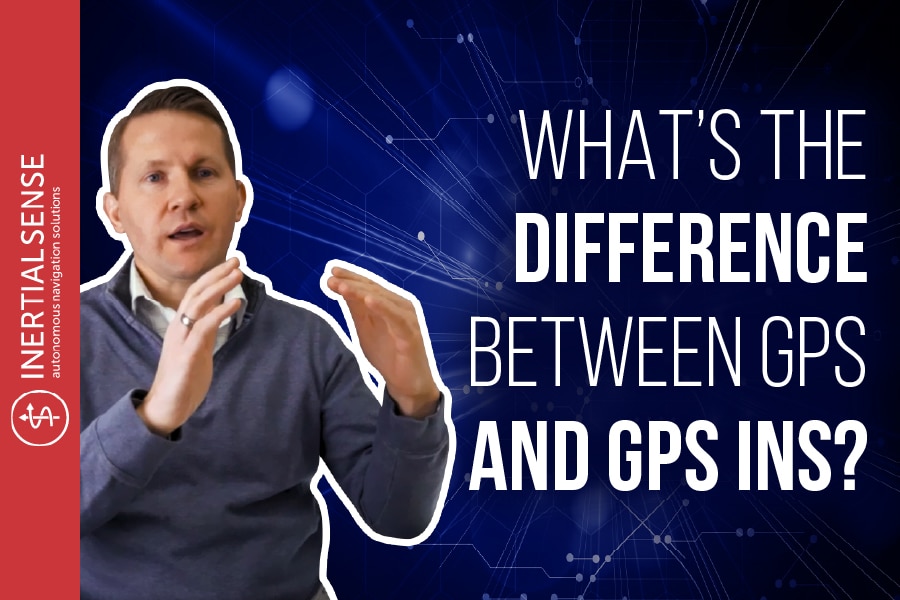
What’s The Difference Between GPS and GPS INS?
What is the difference between a GPS and a GPS INS or a GPS-aided inertial navigation system? Watch the video below as Walt explains the difference between basic GPS and GPS with INS, plus he gives some insider secrets!
GPS can only give you position and update rates are provided at a slower speed. A GPS INS fuses IMU data with calibrated IMU data with the GPS solution.
As a result, this gives you orientation data, roll pitch and heading, and it will give you update rates at a higher rate than the GPS can.
There are many GPS products out there that you can purchase. So why would you want to buy a GPS INS versus a GPS alone? When you buy a GPS INS, you get inertial fusion or sensor fusion with GPS. This data gives a higher accuracy, it filters noise, it will give a faster update rate, orientation data, and roll pitch and heading.
One interesting thing is a lot of GPS companies are trending in the direction of adding inertial to their solution, seeing a value in what we do at Inertial Sense.
Why purchase our product over a standalone GPS receiver? Because you need more than what GPS can give you. You need to know your orientation, you need faster data, you need better accuracy.
We added RTK to our systems because our customers asked for precision. They want to do centimeter positioning. Their robots need to drive within centimeters of a pathway and be able to avoid obstacles. We have customers that are doing survey and they want to know with precision what they are viewing or mapping. RTK gives the ability to provide precision positioning data.
Learn More:
IMU Sensors 101 – Pros & Cons of Sensor Types
Our Technology Overview and Applications
Video Transcript
So what’s the difference between a GPS and a GPS INS or a GPS-aided inertial navigation system?
A GPS gives you position only and provides update rates at a slower speed. A GPS INS fuses IMU data with calibrated IMU data with the GPS solution.
As a result, we’re able to give you orientation data, roll pitch and heading, and give you update rates at a much higher rate than the GPS can. So a GPS INS gives you higher accuracy data at a faster rate than GPS can provide. And additionally gives you orientation data or roll pitch and heading.
Why would you want to buy a GPS INS versus a GPS alone? There are many GPS products out there that you can purchase. But when you buy a GPS INS, you’re getting the inertial fusion or sensor fusion with GPS, data which gives you higher accuracy, filters noise, and gives you faster update rates and orientation data, roll pitch and heading.
You’ve got GPS companies that have traditionally made position solutions and they’re based purely off of satellite signals. Then you have other companies like ours that make inertial navigation systems that take the data from a GPS solution and fuse that with inertial data. One thing that’s interesting is a lot of these GPS companies are trending in the direction of adding inertial to their solution because they see the value in what we do, which is to give you higher accuracy, give you orientation data, and give you faster output rates than you could get off of the GPS data alone.
So it’s a trend, a trending market, we’re heading towards each other. But why would you want to purchase our product over a standalone GPS receiver? You need more than that GPS can give you. You need to know your orientation, you need faster data, you need better accuracy.
Why did we add RTK to our system? People asked for precision. People wanted to be able to do centimeter positioning. So we have customers, people that need to have their robots drive within centimeters of the pathway. They need to stay right on path, they need to avoid obstacles. We have customers that are doing survey. They’re flying a drone and they’re trying to survey areas. They want to know with precision what they’re viewing or what they’re mapping.
So RTK gives us the ability to provide them precision positioning data.

